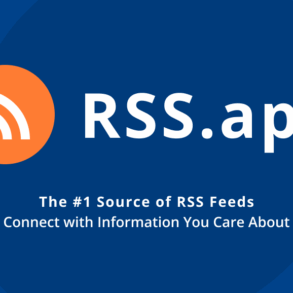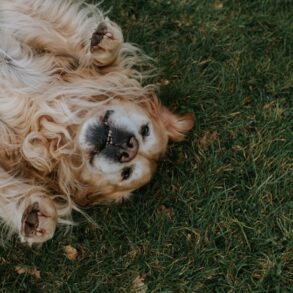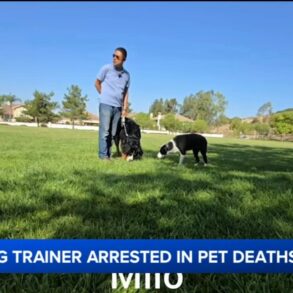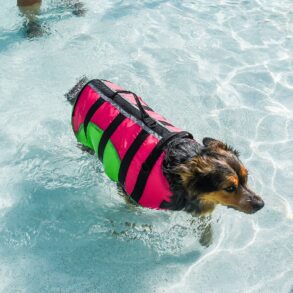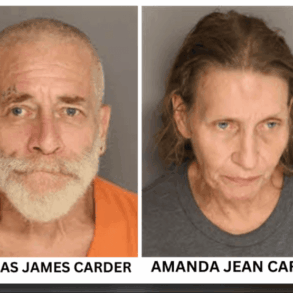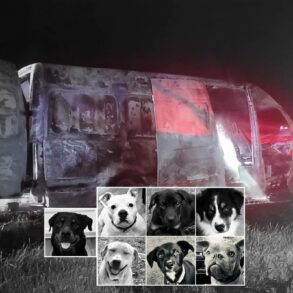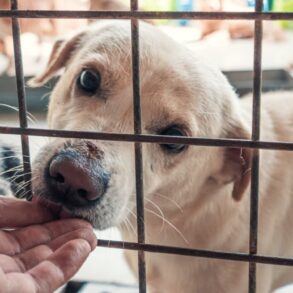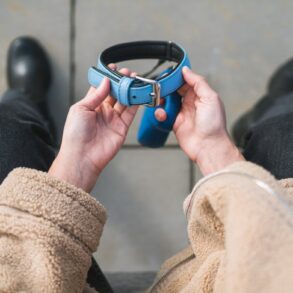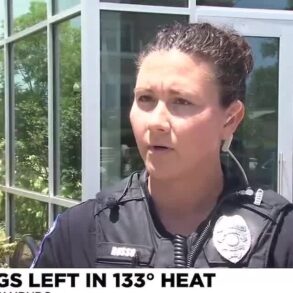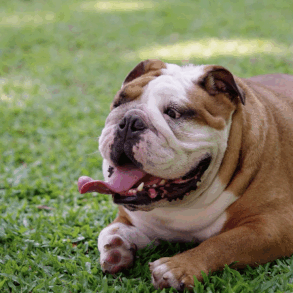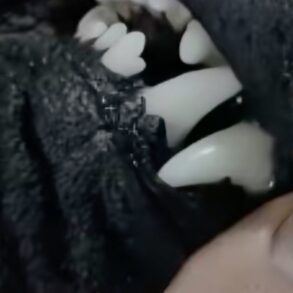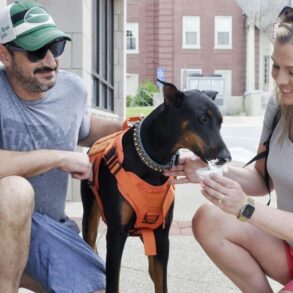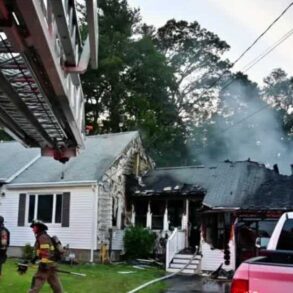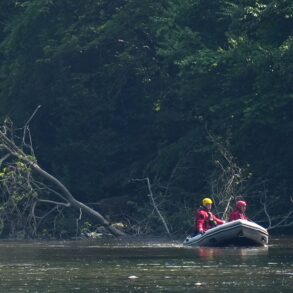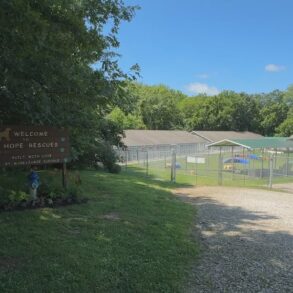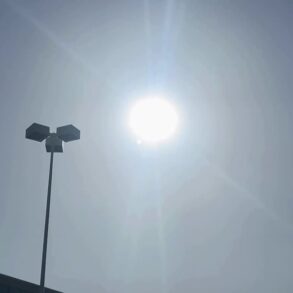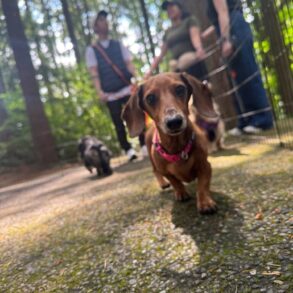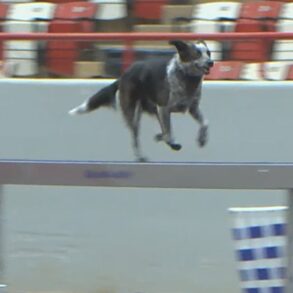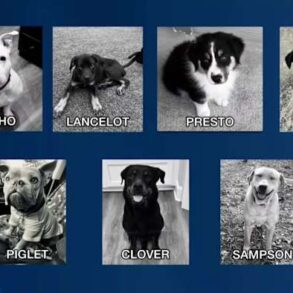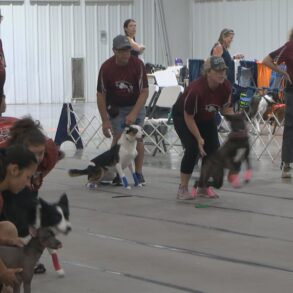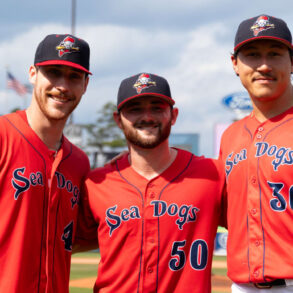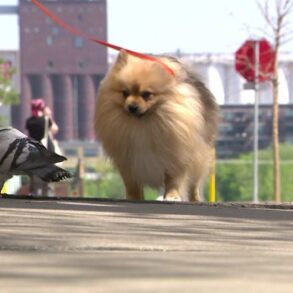The war in Ukraine hasn’t only upended human lives—it’s also left countless dogs stranded in the middle of it all. With fighting still ongoing, soldiers, volunteers, and local families have stepped in, quietly working to rescue the animals left behind near the front lines.
Many of these dogs were abandoned in the chaos, but they haven’t been forgotten. Over time, these dogs have come to mean more than just survival. They’ve become quiet symbols of endurance, a reminder that even in the bleakest moments, something good can still hold on. Their journeys mirror a broader shift in Ukraine’s relationship with animals, from indifference to a genuine sense of care and connection.
Not long after the war began in 2022, Ukraine’s Foreign Minister, Dmytro Kuleba, made a gesture that surprised many: he asked his colleagues to bring their dogs to the office. It wasn’t just about convenience—it was about the comfort and emotional steadiness animals can offer when the world is falling apart.
Kuleba’s own dog, Marik, a French bulldog pulled from the ruins of Mariupol, often sat quietly during high-stakes meetings. Even after Kuleba left office in 2024, the practice continued. That quiet presence, a dog curled up in the corner of a government room, stood as a quiet reminder: even in a nation at war, their lives still mattered too.

Instagram | dmytro_kuleba | Dmytro Kuleba made a touching decision to allow dogs at work, seeing them as emotional support in crisis.
The care for these animals has grown beyond offices. All across Ukraine, dogs have become more than just companions—they’re now regulars in cafes, shops, even hotels. Businesses that once turned animals away are now setting out water bowls, handing out treats, and offering special menus just for them. Many of these dogs came from the front lines, and the stories they carry have a way of bringing people together. Their presence has helped strengthen the bonds within communities, one shared story at a time.
Stories From the Front Lines
Zhuzha’s story is one many can relate to. She appeared one day at a soldier’s base near the front line, hungry and alone.
Mykola Kulivets, a Ukrainian soldier, fed her and soon found himself responsible not only for her but also for five newborn puppies she delivered under his cot. Despite the danger just miles away, these dogs offered a crucial distraction—a reminder of life’s basic needs even in the darkest moments.
“Caring for them was a necessity for all of us,” Kulivets said.
His bond with Zhuzha stayed strong, and when his battalion named their command post after her, it showed just how much a dog’s presence can lift spirits.



Instagram | @washingtonpost | Mykola Kulivets took in Zhuzha, a hungry stray who birthed five puppies beneath his cot at the frontline base.
Some of Zhuzha’s puppies found new homes outside the war zones. Elina Sutiahyna adopted one, Avdyusha, who now supports her disabled husband as his attentive companion. Nadiia Tkachenko took in another puppy, Archie, motivated by the desire to help an animal that had been part of the conflict.
“Watching soldiers with these dogs moved me to tears,” Tkachenko shared. These rescues reflect a growing awareness that caring for dogs is more than charity—it’s a shared responsibility.
Hanna Rudyk’s family adopted Latka, a playful dog born in Toretsk, a city devastated by war. Rudyk, worried about her young daughter’s well-being during air raids, found comfort in Latka’s goofy energy.
“Buying a dog isn’t something we consider anymore. Rescuing one feels right,” she said. Latka became more than a pet—she is a source of calm during the sirens and chaos.



Instagram | drashkaba | Olesya Drashkaba found companionship and new love after adopting Lisa, a rescue dog from Lysychansk.
The bond between humans and dogs in Ukraine goes deeper than companionship. For artist Olesya Drashkaba, adopting Lisa—a dog rescued from Lysychansk—helped fill a void. Lisa quickly adapted to life between studios and city streets, even sparking a new relationship for Drashkaba.
“Dogs aren’t just pets anymore; they’re true friends and partners,” she reflected.
Olha Kotlyarska, a lawyer investigating war crimes, shares a similar journey with her dog Khvoya, who struggles with trauma from the war. “Both of us rely on each other to heal,” Kotlyarska said. With patience and care, Khvoya slowly adjusts to peaceful life in Kyiv.
Then there’s Marko, once called the “saddest dog ever.” Found injured near Orikhiv, volunteers rescued him from a war-torn basement. Kateryna Lytvynenko, who fosters animals abandoned during the conflict, knew immediately he belonged with her.
“Seeing his eyes broke my heart. Bringing him home felt like the right thing,” she said. Marko’s story, like so many others, is one of survival and second chances.
Roman, a combat medic, has witnessed firsthand the bond between soldiers and animals. When he found Leo, a dog left chained near the front in Russia’s Kursk region, Roman’s unit cared for him until he could be moved to safety.
“How we treat animals says a lot about who we are,” Roman said.
His words speak to something bigger. In Ukraine, rescuing dogs isn’t just about pulling them from danger—it’s about holding on to what makes us human, even in the middle of war.
These animals, once forgotten in the chaos, have come to mean much more. They offer comfort, stay loyal, and give people a reason to hope. For many, they’re a quiet source of strength. Ukraine’s growing care for these dogs reflects more than compassion—it marks a shift in the country’s spirit.
This post was originally published on this site be sure to check out more of their content.




